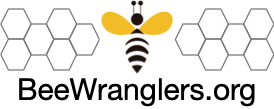Beekeeping, the art and science of nurturing bee colonies for honey production and pollination services, has been practiced for centuries. Beyond its environmental and agricultural benefits, beekeeping also holds the potential for economic viability. However, like any business venture, the profitability of beekeeping depends on various factors. In this article, we will delve into the economics of beekeeping, exploring the costs, revenue streams, and considerations that determine whether beekeeping can be a profitable endeavor.
Initial Investment and Costs: Starting a beekeeping operation requires an initial investment in equipment, bees, and the necessary infrastructure. Beekeeping equipment includes hives, frames, protective gear, and tools, which can vary in cost depending on the scale of operation and equipment quality. Additionally, purchasing honeybee colonies or nucleus colonies (nucs) to populate the hives is another expense.
Maintenance and Operational Costs: Beekeeping requires ongoing maintenance and operational expenses, such as feeding bees during scarcity periods, disease prevention and treatment, hive inspections, and honey extraction equipment. Additional costs may arise from transportation, beekeeping education and training, obtaining necessary licenses or permits, and potential insurance coverage.
Beekeepers can generate revenue from various sources, including:
- Honey Production: Honey is one of the primary revenue streams for beekeepers. The quantity and quality of honey produced depend on factors such as the floral sources available to the bees, climatic conditions, and beekeeping practices. Local market demand, specialty honey varieties, and value-added products (e.g., flavored or creamed honey) can influence the selling price.
- Pollination Services: Many farmers rely on beekeepers for pollination services to enhance their crop yields. Beekeepers can enter into contracts with farmers to provide pollination services during bloom periods. The fees charged depend on factors such as the crop type, acreage, and the demand for pollination in the region.
- Beeswax and Value-added Products: Beeswax, a natural substance produced by bees, has various applications in cosmetics, candles, and crafts. Beekeepers can generate additional income by selling beeswax or creating value-added products from beeswax, such as candles or skincare items.
- Selling Bees, Queens and related bee keeping tools, hives and clothing etc.
- Gift cards, ideally digital, for use as presents etc.
Several factors influence the profitability of a beekeeping business:
- Scale of Operation: The size of the beekeeping operation plays a significant role in profitability. Larger-scale operations have the potential for higher honey production, economies of scale, and the ability to negotiate better contracts for pollination services. However, scaling up requires careful planning, increased investment, and efficient management.
- Location and Floral Resources: The availability and diversity of floral resources impact honey production and the attractiveness of the area for pollination services. Regions with abundant nectar sources and diverse crops offer more opportunities for beekeepers to generate income.
- Bee Health and Management: Maintaining strong and healthy bee colonies is essential for maximizing honey production and ensuring the availability of bees for pollination services. Effective pest and disease management, regular hive inspections, and proper nutrition contribute to the long-term success and profitability of a beekeeping business.
- Marketing and Market Demand: Successful marketing strategies, such as branding, product differentiation, and establishing relationships with local consumers or businesses, can contribute to higher honey prices and a competitive advantage. Understanding the market demand for honey, value-added products, and pollination services in the local area is crucial for developing a profitable business model.
- External Factors: External factors, such as weather conditions, environmental changes, and fluctuations in honey prices, can impact the profitability of beekeeping. Unfavorable weather conditions may affect honey production and crop yields, while fluctuations in honey prices can influence revenue streams.
The profitability of a beekeeping business relies on a combination of factors, including initial investment, operational costs, revenue streams, market conditions, and effective management practices. While beekeeping has the potential to be a profitable venture, success requires careful planning, ongoing education, attention to bee health, and strategic marketing. By considering these factors and staying attuned to market demands, beekeepers can navigate the economics of beekeeping and build a sustainable and profitable business.





